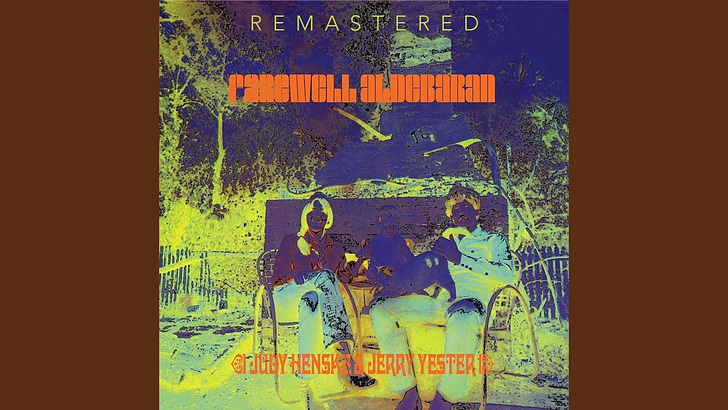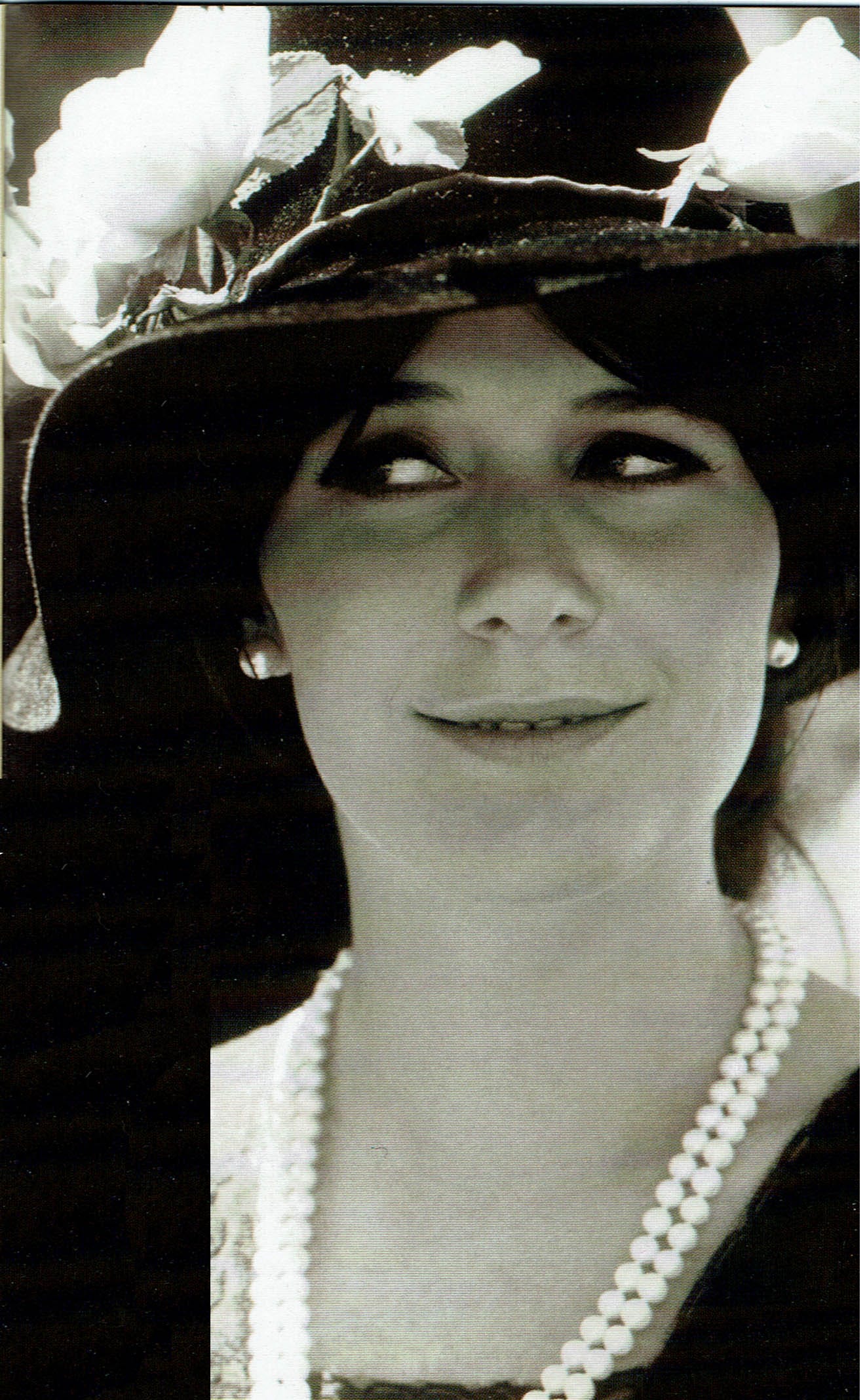From Judy Henske & Jerry Yester - Farewell Aldebaran (Straight Records 1969)
Judy Henske was one of the leading lights of the 50s/60s folk revival. Her style included blues, jazz and even some gospel, with better results than was typical of Caucasian folk singers in that style. She performed a spirited version of Wade In the Water, which is still quite listenable. She was the first to record and is still associated with Billy Ed Wheeler’s song High Flying Bird which later became a standard on the folk rock scene and was an early live favorite of the Jefferson Airplane among others. A career retrospective set was called Big Judy – she was six feet tall and not a delicate minstrel type.
By 1967 even Dave Van Ronk had started a rock band. In 1969 Henske, who I was only vaguely aware of at the time, released with her husband, Jerry Yester, an album called Farewell Aldebaran on the Straight label. Straight was owned by Frank Zappa’s manager and was the outlet for some of his more esoteric clients. I was already paying attention to Captain Beefheart and Tim Buckley so when Farewell Aldebaran came along in a psychedelic jacket, I was game.
These days, the terms “psych folk” and “folk psych” are somewhat meaningless, used by rare record dealers to describe any folk singer with long straight hair or who sings about a unicorn. But there have been records of music that was like folk music but also had themes and sounds that twisted their realities. Two that spring to mind are the Holy Modal Rounders album, The Moray Eels Eat the Holy Modal Rounders and the Incredible String Band’s The Hangman’s Beautiful Daughter. Farewell Aldebaran is in this company. Jerry Yester had replaced Zal Yanovsky in the Lovin’ Spoonful and then produced my favorite Tim Buckley album, Happy Sad. He also produced and/or arranged for Tom Waits, the Turtles, the Association (his brother Jim was in that band) and others. He and Yanovsky co-produced Farewell Aldabaran with an interesting studio crew including some Spector Wall of Sound people, a couple from Kaleidoscope (the one from Claremont, not one of the countless other Kaleidoscopes of those days) and others. Judy wrote most of the lyrics and Jerry wrote most of the music. The songs are quite strong. The overall effect is psychedelic with a sort of gothic atmosphere. The title track, which ends the album, sort of blasts off into outer space while Rapture descends to the depths of the ocean. The lyrics evoke various varieties of the non-everyday but they’re not obscure so much as vividly imagined. Also, there’s a lot of death. Not morbid or sensational death but death as an event of life. This is an aspect of folk music and Judy Henske was comfortable with it. Death also featured in High Flying Bird. And there are quite a few of the tunes that keep coming back to you - in a good way, as in you can’t get them out of your head. If you’re not thrown by unusually imaginative arrangements, this whole album is a great listening experience.
The songs linked here are Rapture and Three Ravens. Rapture is a stately yet gothic piece about drowning divers, to put it bluntly. It has a dramatic sound and ends with an instrumental coda. The dramatic climax of the song comes during this coda and is heard from a Moog synthesizer played by Yester and programmed by Paul Beaver to sound like one of the more esoteric reed stops of a pipe organ. It’s one of those instrumental passages that I find moving in its own right. Three Ravens is a gloss on an English folk song collected by John Ravenscroft and published in 1611. Jerry’s new music sounds like an anthem but is more twentieth (or at least nineteenth) century than seventeenth (the 1611 version was one of those hey nonny nonny type things). Judy’s new lyrics still sound like an ageless tale but the language is not archaic. They tell of a knight dying in a deep forest attended by three hungry ravens and a pregnant doe which comes to bury the knight and die with him. The song is quite beautiful and it’s been stuck in my head now for weeks.
Although distributed by Warner Brothers, Straight Records was mostly known for the most extreme of Captain Beefheart’s and Tim Buckley’s albums. Farewell Aldebaran did not make an impression on the current music market. Judy and Jerry then started a band which they called Rosebud and they made one album, again for Straight. Again, there were some great songs although the sound was less exotic. I think Reno is extremely catchy, as are others. But the band fell apart, as did the Henske-Yester marriage. Jerry produced more records, played with the revived Lovin’ Spoonful (which lacked its two most prominent original members, John Sebastian and Zal Yanovsky) and had several records released in Japan as a solo artist and as a member of the Modern Folk Quartet. A song by the MFQ (This Could Be the Night) produced by Phil Spector ended up as the theme song for Rodney Bingenheimer’s punk/new wave radio show on KROQ in Los Angeles. Judy married Craig Doerge, the keyboard player from Rosebud, and retired from performing to raise some daughters and do some songwriting. Around the turn of the century, she made two more solo albums that I need to listen to more and she died a year ago (in April 2022).
Farewell Aldebaran eventually started catching on with connoisseurs of obscure records. It was somewhat psychedelic, somewhat folky and had great songs, singing and playing. Eventually, Jerry Yester started working on a reissue. He was interrupted by some guys in England who released a bootleg CD of the album. That nipped the reissue in the bud since it was an obscure record in the first place and it was expected that the bootleg would kill sales of a legitimate reissue. There were several bootleg releases of the album but, thankfully, interest continued to grow and Omnivore Recordings legitimately released a remastered CD with bonus tracks, even, in 2016.
The word, psychedelic, comes from the Greek words for mind and expanding. A discussion of what it means can lead to hours of wrangling but I think it can be argued that any great music is mind expanding. This album is. In popular music, psychedelic albums appear in many different genres. When someone makes some music that is imaginative and innovative, it usually gets called psychedelic sooner or later. For more on this topic, see Recalcitrant Radio 0026. I’ve also included a link to Judy’s record of High Flying Bird which has been called the first folk rock record. Could be, could be.
Hear them here:
And, for reference, regular folk singing Judy:
Recalcitrant Radio is back and now it’s on Substack. If you got this sent to you, you should be subscribed and subscriptions are still free. All the older selections are on my Substack home page and can be seen/heard there - I recommend starting with #1. For more information on Recalcitrant Radio, see: https://paulsanoian.substack.com/about
Revised 2023/05/03





